Stay in the know on all smart updates of your favorite topics.
Artikel 'Eigen opwek voor de buurt - Slim omgaan met het bestaande net'

Hugo Niesing, directeur van Resourcefully, werd geïnterviewd in het decembernummer 2024 van het gemeentelijk magazine van Amsterdam over innovatieve oplossingen voor de integratie van mobiliteit, energie en netcongestie. Het artikel laat zien hoe projecten zoals de pilot in Sporenburg in het Oostelijk Havengebied bijdragen aan een duurzaam en toekomstbestendig lokaal energiesysteem. Hier werken we met 500 huishoudens om piekuren te verminderen en lokaal opgewekte energie optimaal te benutten.
Lees hier meer over dit inspirerende initiatief via de link.
Waag Open: energy of the future
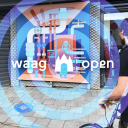
Get up at your feet and join for a summer excursion in Amsterdam-Noord! Although we see more and more solar panels in our streets, as a resident you see very little of the energy transition in the neighbourhood. in Amsterdam, there is already a neighbourhood where the future has started: Buiksloterham in Amsterdam North. Buildings in this area are natural gas-free and almost all of them obtain their energy in a different way.
Be aware that the main language is Dutch!
To make this visible, little glimpses have been placed in the public space. The art objects give virtual glimpses into the devices and installations behind walls and in basements. On the pavement, a 3D painting shows where the district heating network runs, and a viewing tube shows you how full the neighbourhood battery is underground. If you walk past it often enough, you will start to see connections: the weather was really nice today, so the battery is completely full!
During this Waag Open, we'll take a walk alongside different glimpses. All facets of the energy tranisty are covered: we show how deep the boreholes of the thermal storage are and where exactly the heat from the heat network comes from. There is also a focus on solar panels, batteries and heat pumps - of all shapes and sizes! Take a walk with us on Thursday 1 August and you're bound to learn something new about the energy transition!
Programme
| 19:15 - 19:30 | Meetup at Schoonschip (Johan van Hasseltkade 225B, Amsterdam) |
|---|---|
| 19:30 - 19:45 | Welcome & introduction by Waag |
| 19:45 - 21:14 | Walk along the objects |
| 21:15 - 21:30 | Drinks at De Ceuvel |
Ondernemers met duurzame oplossingen gezocht voor aanbesteding
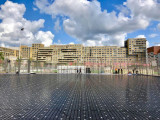
De aanbesteding Scale Up Toekomstbestendige kunstgrasvelden is gepubliceerd. Met het project dagen de gemeenten Amsterdam en Haarlem ondernemers uit om duurzame oplossingen op kunstgras sportvelden toe te passen. De inschrijving hiervoor sluit op 17 juni 2024 om 14.00 uur.
De genoemde gemeenten zijn op zoek naar partijen met innovaties op het gebied van: duurzame energie, klimaatadaptie, circulariteit of slim en schoon bouwen. De duurzame oplossingen willen ze vervolgens toepassen bij de vervanging en nieuwe aanleg van kunstgras sportvelden. Naar verwachting staan er de komende tien jaar meer dan 200 velden op het programma. Hiermee wordt verwacht een grote bijdrage te leveren aan de doelstelling van de gemeenten Amsterdam en Haarlem om in 2050 een klimaatneutrale stad te zijn.
Doe mee!
Doe mee met dit project en schrijf je in voor de aanbesteding op Mercell.
Kijk voor meer informatie op de website van het project of stel je vraag door een e-mail te sturen naar sportveldvandetoekomst@amsterdam.nl.
Disclaimer: Het project wordt medegefinancierd door het LIFE Programme van de Europese Unie. Noch de Europese Unie, noch de subsidieverlenende autoriteit kan voor de inhoud van het project verantwoordelijk worden gehouden. Aan dit artikel kunnen geen rechten worden ontleend, de aanbestedingsdocumenten zijn leidend.
Ondanks congestie toch bedrijvigheid op Schiphol Trade Park

Wat in oktober 2020 begon als een urgent probleem – in het gebied waar Schiphol Trade Park in ontwikkeling was was geen extra transportcapaciteit meer mogelijk en de geplande bouw en uitbreiding moest noodgedwongen stoppen – is inmiddels opgelost. Onze baanbrekende virtuele netoplossing is daar nu namelijk ruim twee jaar in werking, en met succes: de bedrijven op Schiphol Trade Park zijn operationeel, breiden uit, en elektrificeren ondanks de netcongestie in het gebied.
Congestie op Schiphol Trade Park
Een blik op de congestiekaart maakt duidelijk dat Schiphol Trade Park in een door congestie grotendeels op slot gezet gebied ligt. Op het middenspanningsnet is geen extra capaciteit beschikbaar voor het transporteren van elektriciteit. Dat betekent dat er niet meer ontwikkeld wordt: een bedrijf krijgt namelijk wel een aansluiting, maar geen transportcapaciteit. Dit is niet alleen een probleem voor de bedrijven die zich hier willen vestigen, maar ook voor gebiedsontwikkelaar SADC (Schiphol Area Development Company), dat in 2020 nog de ambitie had om het meest duurzame business park van Europa te worden (en in 2023 door de BREEAM-NL Outstanding certificering zelfs het meest duurzame logistieke business park van de wereld is!). De ontwikkelaar wilde voorkomen dat bedrijven afzonderlijk een eigen oplossing zochten en er een wildgroei aan gasgeneratoren met de daarbij behorende uitstoot zou ontstaan. SADC zag dat dit slimmer, goedkoper en duurzamer kon, door op een innovatieve manier partijen te verbinden en te laten samenwerken. Bedrijven kunnen daardoor bouwen, uitbreiden en elektrificeren. Over de aanloop naar het project lees je meer op onze projectpagina.
Een doorbraak: de virtuele netoplossing
Alle bij de coöperatie aangesloten bedrijven delen hun eigen transportcapaciteit met elkaar. Zo maken ze slim gebruik van de gereserveerde ruimte. STELLAR Grid Management leest continu de slimme meters uit en stuurt de energiesystemen (zoals zonnepanelen, energie-opslag, en generatoren) achter de meter aan. Bovendien zorgen we voor de financiële afhandeling van deze aansturing, zodat de deelnemende bedrijven elkaar compenseren voor gebruikte elektriciteit en voor het beschikbaar stellen van hun stuurbare energiesystemen.
De resultaten van een jaar virtueel net
Het virtuele net is twee jaar actief. In het eerste jaar sloten zich nog gefaseerd bedrijven aan bij het collectief. De resultaten van dat jaar zijn voorspoedig, maar niet helemaal volledig.
Nu we een tijdje bezig zijn, delen we met vertrouwen onze resultaten. Voor deze resultaten keken we naar 2023. Zo nemen we dus alle seizoenen en bijbehorende energievraag mee in deze analyse.
Het collectief wordt goed benut: in 2023 is 2.104 MWh aan elektriciteitslevering extra mogelijk gemaakt door het delen van de capaciteit binnen het virtuele net. Zonder deze slimme oplossing hadden heel veel stuurbare energiesystemen, zoals batterijen en generatoren, deze elektriciteit moeten leveren. In het collectief nemen in totaal zeven bedrijven deel die weinig of geen netcapaciteit hebben. Dankzij deze slimme oplossing kunnen de bedrijven gebruikmaken van de beschikbare ruimte en opwek van de buren.
Om zeker te zijn van voldoende elektriciteit binnen de gestelde limieten hebben meerdere bedrijven geïnvesteerd in batterijen en gas- en dieselgeneratoren. Het collectief gebruikt die middelen als er een tekort aan capaciteit is. De generatoren dienen vooral als achtervang. Voordat STELLAR deze aanstuurt, bepaalt het systeem of de aangesloten batterijen kunnen voorzien in het verwachte moment van schaarste. Als de batterij niet voldoende is, schakelt STELLAR automatisch een generator in. In heel 2023 is ertwee keer een generator ingezet om binnen de netlimiet te blijven, voor in totaal 2 uur. Toen de generatoren aangingen waren de batterijen nog niet operationeel, anders waren die generatoren waarschijnlijk niet nodig geweest.
Zonder virtueel net hadden deze partijen moeten investeren in elk een eigen generator (en eventuele back-up generator). Die generatoren hadden gezamenlijk tot 31.000 draaiuren gemaakt. Dat is gelukkig voorkomen. Er is hiermee voor 468.000 m3 minder gas verbruikt, en daardoor is er lokaal 842 ton CO2 minder uitgestoten door generatoren.
Het virtuele net is dus een solide oplossing voor congestiegebieden. Dankzij de slimme aansturing zijn zeven bedrijven operationeel die zonder de virtuele netoplossing hadden moeten uitwijken naar een andere locatie in Nederland of daarbuiten,terwijl een aantal van hen al aan het bouwen was. En er is een enorme hoeveel CO2-uitstoot voorkomen.
De toekomst van Grid Management
We zijn trots op ons virtuele net bij Schiphol Trade Park. We horen ook een enorme urgentie in de markt: veel partijen worstelen met netcongestie en zoeken naar een vergelijkbare oplossing. Maar de toekomst van Grid Management is niet hapklaar. Het project bij Schiphol Trade Park is een pilot, en de voorwaarden van een standaard contractvorm voor een dergelijke collectieve oplossing (groeps-transportovereenkomst) zijn nog niet definitief vastgesteld.
Niet alleen bij Schiphol
Schiphol Trade Park is zeker niet de enige plek in Nederland waar sprake is van congestie. Eerder dit jaar lanceerden we onze oplossing bijvoorbeeld ook in het Zwolse Hessenpoort. Heb jij ook last van congestie? We denken graag met je mee. Neem contact met ons op.
Financing- and investment options for the Clean Energy transition.
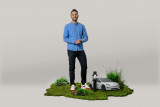
Recognizing the significance of clean tech is pivotal in accelerating the energy transition and shaping a more sustainable future for our planet. However, these solutions are hindered by limited funding options for sustainable companies.
DuurzaamInvesteren.nl is committed to speeding up the sustainability transition by facilitating the right financial solutions for clean energy companies and democratizing investment opportunities. As an alternative investment solution, we connect entrepreneurs with investors and vice versa through our platform.
Founded in 2013, we now are the largest Dutch sustainable investment platform offering alternative finance solutions. We offer guidance, quick turnaround times and flexible terms & conditions and developed a renowned sector expertise in the clean energy transition.
Over the past 10 years we've financed over 335 million euros and we are proud to be a network of more than 17.000 investors. We have helped over 278+ green projects and companies to grow.
Join our webinar to hear more about speeding up the transitions and the opportunities as a sustainable entpreneur or investor.
Details
Date: Tuesday March 26
Time: 7:30-8:30 PM
Duration: 1 hour
Program
- Welcome and opening by CEO Dennis Kromhout van der Meer.
- How DuurzaamInvesteren.nl accelerates the energy transition
- Cases
Marty Smits, founder Refurb battery and Sosimple:
Refurb battery won the Brabant Circular Innovation Award in 2023 and raised 1.15 million euros within 24 hours through DuurzaamInvesteren.nl. Refurb battery supports the energy transition by developing circular battery storage systems and eliminating the increasing amount of li-ion waste.
Marty Smits is also the founder of Sosimple, whose mission is to make clean energy accessible and affordable for everyone and every company in South Africa. SoSimple does this via company roofs throughout South Africa. There are 50 installations live and 15 in development. DuurzaamInvesteren.nl raised more than 5 million for Sosimple.
- How to invest in clean tech energy solutions
- How to raise finance as an entrepreneur via DuurzaamInvesteren.nl
- Q&A Session
Moderation
Ilse Kwaaitaal, director Impact Hub Amsterdam. Impact Hub Amsterdam is part of a worldwide entrepreneurial network that focuses on scaling innovative sustainable solutions through connecting them to finance, knowledge and a valuable growth network.
Note: this event will be in Dutch.
Join our event here: https://lu.ma/kx7gj504
22. Nature, never far away

This is the 22st episode of a series 25 building blocks to create better streets, neighbourhoods, and cities. Its topic is the way how the quality of the living environment benefits from reducing the contrast between urban and rural areas.
Photos from space show a sharp contrast between city and countryside. Urban areas are predominantly gray; rural areas turn green, yellow, and brown, but sharp contrasts are also visible within cities between densely built-up neighborhoods and parks. Even between neighborhoods there are sometimes sharp transitions.
The division between city and country
Large and medium-sized cities on the one hand and rural areas on the other are worlds apart in many respects and local government in municipalities would like to keep it that way. For a balanced development of urban and rural areas, it is much better if mutual cohesion is emphasized, that their development takes place from a single spatial vision and (administrative) organization and that there are smooth transitions between both. The biggest mistake one can made is regarding the contrast between city and country as a contradiction between city and nature. Where large-scale agriculture predominates in the rural area, the remaining nature has a hard time. Where nature-inclusive construction takes place in cities, biodiversity is visibly increasing.
The idea that urban and rural areas should interpenetrate each other is not new. At the time, in Amsterdam it was decided to retain several wedges and to build garden villages. Some of the images in the above collage show such smooth transitions between urban and rural areas: Eko Park, Sweden (top right), Abuja, Nigeria (bottom left), and Xion'an, China (bottom center). The latter two are designs by SOM, an international urban design agency that focuses on biophilic designs.
Pulling nature into the city
Marian Stuiver is program leader Green Cities of Wageningen Environmental Research at WUR. In her just-released book The Symbiotic City, she describes the need to re-embed cities in soil, water and living organisms. An interesting example is a design by two of her students, Piels and Çiftçi, for the urban expansion of Lelystad. The surrounding nature continues into the built-up area: soil and existing waterways are leading; buildings have been adapted accordingly. Passages for animals run between and under the houses (see photo collage, top left). Others speak of rewilding. In this context, there is no objection to a small part of the countryside being given a residential destination. Nature benefits!
Restoration of the rural area
The threat to nature does not come from urban expansion in the first place, but mainly from the expansion of the agricultural area. Don't just think immediately of the clearing of tropical rain woods to produce palm oil. About half of the Dutch land area is intended for cows. Usually, most of them are stabled and the land is mainly used to produce animal feed.
The development of large-scale industrialized agriculture has led to the disappearance of most small landscape features, one of the causes of declining biodiversity. Part of the Climate Agreement on 28 June 2019 was the intention to draw up the Aanvalsplan landschapselementen . Many over-fertilized meadows and fields that are intended to produce animal feed in the Netherlands were once valuable nature reserves. Today they value from a biodiversity point of view is restricted and they are a source of greenhouse gases. Nature restoration is therefore not primarily focusses at increasing the wooded area. Most of the land can continue to be used for agricultural and livestock farming, provided that it is operated in a nature-inclusive manner. The number of farmers will then increase rather than decrease.
Pulling the city into nature
There are no objections against densification of the city as long this respects the green area within the city. So-called vertical forests by no means make up for the loss of greenery. Moreover, space is needed for urban agriculture and horticulture (photo collage, top center), offices, crafts, and clean industry as part of the pursuit of complete districts. Nature in the Netherlands benefits if one to two percent of the land that is currently used to produce animal feed is used for housing, embedded in a green-blue infrastructure. Some expansion and densification also apply to villages, which as a result are once again developing support for the facilities, they saw disappearing in recent decades.
Finally, I mentioned earlier that nature is more than water, soils, plants, and trees. Biophilic architects also draw nature into the built environment by incorporating analogies with natural forms into the design and using natural processes for cooling and healthy air. The 'Zandkasteel' in Amsterdam is still an iconic example (photo collage, bottom right).
Follow the link below to find an overview of all articles.
Spectral Receives Investment from ABN AMRO Sustainable Impact Fund to Scale its Operations

Spectral, a pioneer in the integration of energy and information technologies and a highly impactful scale-up in the energy sphere, is excited to announce a major turning point in its expansion. Spectral has successfully secured an investment from ABN AMRO’s Sustainable Impact Fund (SIF). The fund invests in impact-driven companies seeking both social and financial returns. The investment will primarily be used to scale and professionalize operations.
AMS Conference 2024: Call for abstracts and special sessions

We invite you to contribute to the conference "Reinventing the City 2024 - Blueprints for messy cities?"
Deadline to submissions: November 14, 2023
Notification of acceptance: December 14, 2023
submit here>>
The AMS Scientific Conference (AMS Conference) explores and discusses how cities can transform themselves to become more livable, resilient and sustainable while offering economic stability. In the second edition of “Reinventing the City” (23-25 April 2024), the overarching theme will be <em>"</em>Blueprints for messy cities? Navigating the interplay of order and complexity'. In three captivating days, we will explore 'The good, the bad, and the ugly' (day 1), 'Amazing discoveries' (day 2) and 'We are the city' (day 3).
Call for abstracts
The AMS Conference seeks to engage scientists, policymakers, students, industry partners, and everyone working with and on cities from different backgrounds and areas of expertise. We therefore invite you to submit your scientific paper abstract, idea for a workshop or special session with us. Submissions should be dedicated to exploring the theme ‘Blueprints for messy cities?’. We especially invite young, urban rebels to raise their voice, as they are the inhabitants of our future cities.
Assessment
Our scientific committee responsible for the content of the conference program will assess all submissions and select a final program of contributions. Notification of acceptance will follow before 1 December 2023.
Topics
mobility | circularity | energy transition | climate adaptation | urban food systems | digitization | diversity | inclusion | living labs | transdisciplinary research
SUBMISSIONS AND CONTRIBUTIONS
| SCIENTIFIC PAPER ABSTRACTS |
We invite academics, industry partners, and professionals from all ages engaged in the related fields of urban design, governance, architecture, data science, engineering and/or sociology to submit an abstract for a conference presentation of your scientific paper (250-450 words).
| WORKSHOPS |
If you have a workshop proposal, please outline its purpose, the specific knowledge, techniques, or practices it covers, its objectives and learning outcomes, teaching strategies and resources, target audience, and any prerequisites, including the required level of experience (250-450 words).
| SPECIAL SESSIONS |
Next to scientific papers and workshops, we encourage you to submit different types of special sessions. These special sessions can include interactive forums, excursions, or practical demonstrations, depending on the subject and objectives. When submitting your proposal for a special session, we ask you to clearly highlight the session's objectives, expected collaborators (if applicable), the intended audience, and the type of session. Please also indicate whether you prefer an online or in-person format. Please note that you will be responsible for the content and organization of the session (250-450 words).
Click here to visit the event page and find more information on details about the Scientific Conference.
SESA project – Smart Energy Solutions for Africa to accelerate the green transition and energy access

Context
Africa is the fasted growing continent on the planet, measured both in GDP as in population, which historically is accompanied with a growth in energy consumption. With an eye on the Paris Agreement and COP26 it is clear the energy should be Low or even Zero Emission. However, it is important this does not stifle the economic growth allowing millions to climb out of poverty. With this in mind the EU funded the SESA project that aims at mitigating climate change while improving access to sustainable energy under affordable, reliable conditions.
Project brief
SESA is a four-year (2021-2025) EU H2020 funded R&D project designed to combine innovative energy access solutions for a range of applications in both urbanised and rural contexts in Africa. These solutions will include decentralised renewables (solar photovoltaics), innovative energy storage systems (including second life batteries), waste-to-energy systems (biomass to biogas), smart microgrids, (micro) mobility solutions, climate-proofing, resilience and adaptation, and rural internet access.
SESA focusses on testing, validating and replicating those energy innovations through co-developed demonstration actions in 9 sites across the continent (1 Living Lab for testing, 4 for validation and 4 for replication).
The collaborative project is the result of a strong partnership between leading European and African universities, research centres, industry actors, local governments, knowledge and implementation organizations and networks.
Objectives
The main goal of SESA is to support a diversity of affordable solutions that help provide access to reliable, affordable, and sustainable energy services for all, creating new business opportunities and developing concepts that can directly contribute to a low-carbon development. It further provides policy makers with recommendations aiming at creating a favourable regulatory environment to ensure long-term impacts of the solutions developed. In addition, a key deliverable for the project is the SESA Toolbox, which will contain materials relating to the following main building blocks:
- Impact assessment
- Capacity building
- Business plans and models
- Innovations tested in demonstration actions
- Design, operations and management for different solutions
- Financing & funding options
- Policy support
Cenex NL’s key contributions
Cenex NL leads the work package responsible for the development of the key repository of the project, the so called “SESA Toolbox”, and the evaluation of the project results available in the toolbox. Our team will be involved in three tasks:
- Build a scalable and harmonised toolbox for advanced implementation, management and operation strategies of efficient sustainable energy solutions.
- Develop an evaluation framework based on the Life Cycle Assessment (LCA) methodology to quantify and compare the environmental impacts of the proposed solutions.
- Assess the impact of the solutions developed in at least five the demonstration and validation projects using the framework developed in the previous task.
This project has received funding from the European Union’s Horizon 2020 research and innovation progamme under grant agreement No 101037141
Energy Communities and other collective solutions

On June 6, Flexiblepower Alliance Network (FAN) and TKI Urban Energy are hosting the second webinar in the 2023 series of the Smart Energy Community: "Energy Communities and other collective solutions" (in Dutch).
Opening
Opening and update on the activities of Flexiblepower Alliance Network (FAN) by Adriaan van Eck, chairman of FAN.
Starting an Energy community, but how?
If you want to set up an energy community, where should you start? How do you organise an energy cooperation? Thijs Huls from the energy community Agem, in the Achterhoek, discusses what it takes to start an Energy community in terms of data, agreements and platforms and will explain how you can make an energy community really smart about their energy.
Power pitch: Groendus
Energy communities are not just for consumers, energy cooperations can also benefit businesses and entrepreneurs. René Raaijmakers of Groendus will tell us more about the opportunities for businesses to engage collectively in energy communities.
Power pitch: BAM
Within the innovation project TROEF, BAM is developing an energy-as-service concept. Marco Thijssen of BAM will explain more about the community platform that is part of TROEF and how they use gamification to encourage users to pursue their common goal.
Guide to Smart Energy Systems
Richard de Bruin of Rebel Group presents the Smart Energy Systems Guide, a report the Rebel Group developed on behalf of TKI Urban Energy. Richard will take us through the approach and considerations involved, taking three perspectives: energy hubs, business parks and energy communities.
Register:
https://cdn.flxml.eu/f-0411e667dc269719
Website:
https://topsectorenergie.nl/nl/agenda/smart-energy-community/
Question hour: Accelerating the energy transition

As DRIFT, we’re noticing that changemakers in the energy transition are currently facing challenges that we could only dream of years ago – or that kept us up at night. In this question hour, you get to ask transition experts Gijs Diercks and Noortje Flinkenflögel all sorts of questions about the energy transition in general and our course Versnelling van de Energietransitie in particular.
Trade mission sustainable building and energy systems to North Rhine Westphalia (in Dutch)

Biedt jouw bedrijf een innovatieve en duurzame oplossing voor de gebouwde omgeving? En maakt expansie naar Duitsland deel uit van jouw internationale strategie? Maak dan van deze gelegenheid gebruik om meer inzicht te krijgen in de markt, en toekomstige handelspartners te vinden tijdens deze korte inspiratiemissie naar Noordrijn-Westfalen, Duitsland.
Deze Handelsmissie is interessant voor bedrijven die:
- Een innovatieve oplossing bieden voor duurzame gebouwen, stedelijke energiesystemen en/of infrastructuur
- Interesse hebben in, of al actief zijn op, de Duitse markt
- Specifiek verder willen uitbreiden in Noordrijn-Westfalen
Wat kun je verwachten op 8 maart?
Tijdens deze missie krijg je een overzicht van:
- Belangrijke lokale stakeholders en hun rol in de sector
- (Nieuwe) regelgeving omtrent duurzaam bouwen, inclusief financiering
- Tips voor zakendoen in Noordrijn-Westfalen
- Specifieke marktkansen, bijvoorbeeld lopende/toekomstige aanbestedingen, ontwikkelingsprojecten en innovatieprojecten
Daarnaast krijg je inzicht in de huidige stand van zaken in deze regio, door middel van een bezoek aan bouwprojecten in Düsseldorf en Krefeld die hoog scoren op het gebied van duurzaamheid. Tot slot bieden we tijdens deze handelsmissie netwerkmomenten met stakeholders in Noordrijn-Westfalen.
Momenteel wordt gewerkt aan het programma.
Let op: aangezien we op 8 maart vroeg beginnen, dienen deelnemers op 7 maart aan te reizen richting Düsseldorf.
Deze missie wordt georganiseerd door FME in samenwerking met InnovationQuarter, Amsterdam Trade & Innovate, ROM Utrecht Region, en partners in de regio Noordrijn Westfalen.
Road to Decarbonisation: Clean, Smart and Secure Solutions

This final event of the Interreg North-West Europe CleanMobilEnergy (CME) project will be a unique opportunity to understand our road to decarbonisation. Speakers from the CME project and other innovative projects and organisations will share their experiences and learnings regarding realising local energy communities, electric mobility, sustainable heating, energy storage and smart, flexible energy systems (such as V2G) from a range of perspectives including technical, financial, social, governance and legal/policy to paint a holistic picture of the future of the energy system and how we get there.
The 1.5-day conference will feature experiences from the implementation of pilots in Arnhem, Nottingham, Stuttgart and Schwäbisch Gmünd within the CME project as well as real-world implementation learnings from other state-of-the-art projects in the field. In the CME pilots, e-mobility solutions were implemented together with local renewables, storage and an open-source energy management system (the REMove tool) to connect, monitor and optimise the energy flows. By matching local energy needs with local renewables through smart solutions, such a system increases renewable energy's economic value and significantly reduces CO2 emissions. This also contributes to increased energy security and independence of European cities and regions, at a time when the cost of energy has been increasing to record levels throughout Europe.
This event is meant for forward-looking local decision makers (including local and regional governments, community organisations and cooperatives), system integrators, e-mobility providers, renewable energy providers, electricity grid operators and ICT developers, to provide a clear view of how models such as energy communities and energy management tools like ReMove can support organisations, cities and regions in their decarbonisation journeys. The event will be held in English.
Finally, the second day of this event will include a site visit to the CME project’s Arnhem pilot site, where the ReMove tool supports the supply of local renewable energy from a 14MW solar farm to river cruise ships in the maintenance harbour adjacent to the city’s industrial area through a cold ironing (shore-to-ship power) system, as well as other pilots conducted at the IPKW innovative business park such as fuelling of hydrogen vehicles.
Battery on Wheels

Monday, October 31 2022, DeeldeZon and the VER, Vereniging Elektrische Rijders, will jointly organise the 'Battery On Wheels Conference'. A seminar entirely dedicated to V2X: bi-directional charging of electric vehicles.
By charging the battery of an EV with sustainable energy and discharging it to the (local) grid, the electric car becomes an important link in the energy transition. It could also be a promising solution to rising energy costs and grid investments. What are the experiences, best practices, prospects and policies? How do we cleverly respond to this? What will the market look like? And how do we join forces?
You are cordially invited to Battery On Wheels on October 31st!
Wat weet jij over gedecentraliseerde energiesystemen?
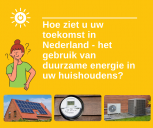
Ik ben Kyaw Nyunt Linn, momenteel bezig met mijn masterscriptie in MSc. Urban Management and Development (UMD) aan het Institute for Housing and Urban Development Studies (IHS) van de Erasmus Universiteit Rotterdam.
Het doel van dit onderzoek is om de houding ten opzichte van gedecentraliseerde energiesystemen op gemeenschapsniveau te onderzoeken en te begrijpen hoe prosumerisme en vraagrespons kunnen worden gerealiseerd in de energietransitie van Nederland. De resultaten van dit onderzoek kunnen worden gebruikt om beleidsmakers en lokale energie-initiatieven te begeleiden bij het ontwikkelen van hun gemeenschappen en activiteiten met betrekking tot de transitie van hernieuwbare energie op gemeenschapsniveau.
Voor dit onderzoek ben ik op zoek naar mensen die mijn enquête hierover willen invullen.
Het invullen van de enquête duurt ongeveer 7-10 minuten.
Wij verzekeren dat alle verstrekte informatie vertrouwelijk verwerkt wordt en alleen voor academische doeleinden zal worden gebruikt.
Lezing - De klimaatkloof - 15 september 2022
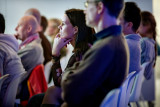
Hoe kan het dat de plek waar je geboren bent bepaalt hoeveel je lijdt onder klimaatverandering? De gevolgen van klimaatverandering treffen iedereen op een andere manier. De vergroening van Nederland kan bijvoorbeeld zorgen voor vervuiling elders ter wereld. En gezinnen met een hoger inkomen kunnen zich vaak beter beschermen tegen de negatieve effecten van milieuvervuiling, bijvoorbeeld door luchtfilters aan te schaffen. Daphina Misiedjan (universitair docent, jurist en onderzoeker ISS/Erasmus Universiteit Rotterdam) legt in deze lezing uit dat klimaatongelijkheid een wereldwijd probleem is dat op alle niveaus zichtbaar is en wat we kunnen doen om de kloof in te perken.
Foto: DigiDaan
How do you see your future in The Netherlands - using renewable energy in your households?
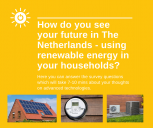
Hello,
I am Kyaw Nyunt Linn, currently working on my masters thesis in MSc. Urban Management and Development (UMD) at the Institute for Housing and Urban Development Studies (IHS) of Erasmus University Rotterdam.
The aim of this survey is to explore the attitudes towards decentralised energy systems at the community level and understand how prosumerism and demand response can be realised in the energy transition of the Netherlands. The results of this research may be used to guide policy makers and local energy initiatives in developing their communities and activities regarding the transition of renewable energy at the community level.
It will take about 7-10 minutes to fill out the survey.
https://forms.gle/xgt1PJYmjJEFbxoY7
Hyperefficiënt zonnepark dankzij smart grid

In de polder in Schagen werken we in een innovatieve samenwerking aan het zonnepark van de toekomst: De Dijken. Dit park heeft niet alleen de nieuwste PV-panelen, maar ook plek voor mobiele batterijen. Dankzij die batterijen en ons Smart Grid Platform maken we hyperefficiënt gebruik van de beschikbare zonne-energie. In het artikel op onze website lees je meer over deze bijzondere samenwerking en onze ambitieuze toekomstplannen.
Terugkijken SES community digitale sessie congestiemanagement 2.0 en financieringsregeling
Op dinsdag 5 juli, organiseerde de werkgroep slimme energie systemen (SES) van de Provincie Noord-Holland, TenneT en Liander een digitale sessie voor de SES community. Hierin vertelde Liander over congestiemanagement 2.0 en gaf de Provincie inzicht in de aankomende subsidieregeling voor SES projecten.
Updates ontvangen van en/of meedoen aan de community? Mail naar cato.bechtold@hiemstraendevries.nl
Transities versnellen met slimme investeringen
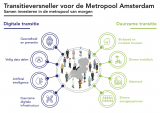
Samen slimmer investeren: daaraan werken Amsterdam Economic Board en Metropoolregio Amsterdam in de ‘Transitieversneller voor de Metropool Amsterdam’. Met dit inspiratiedocument versnellen zij de transities die nodig zijn voor de slimme, groene en gezonde metropool van morgen.
Er zijn acht investeringsthema’s geselecteerd: gezondheidsbevordering en preventie, waterstof, slimme elektriciteit, circulaire bouw, slimme mobiliteit, veilig data delen, artificial intelligence (AI) en een duurzame digitale infrastructuur. Deze thema’s bouwen voort op de kracht van onze regio en zijn in lijn met de financiële mogelijkheden en doelen vanuit Den Haag en Brussel.
Lees het artikel voor meer informatie.
Stay up to date
Get notified about new updates, opportunities or events that match your interests.

